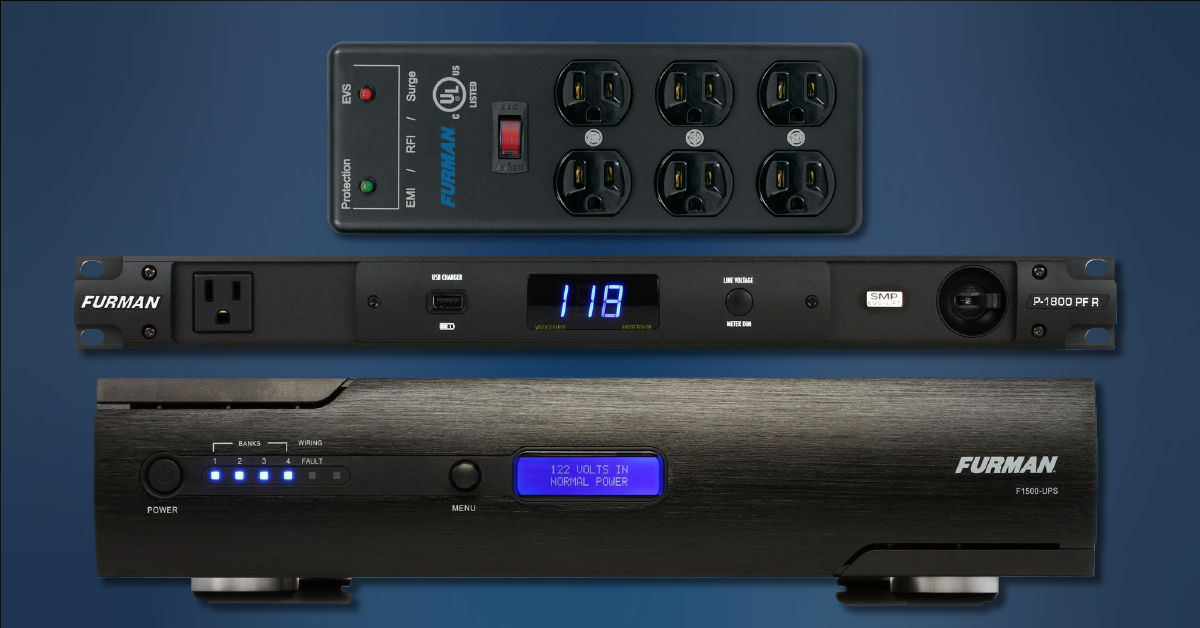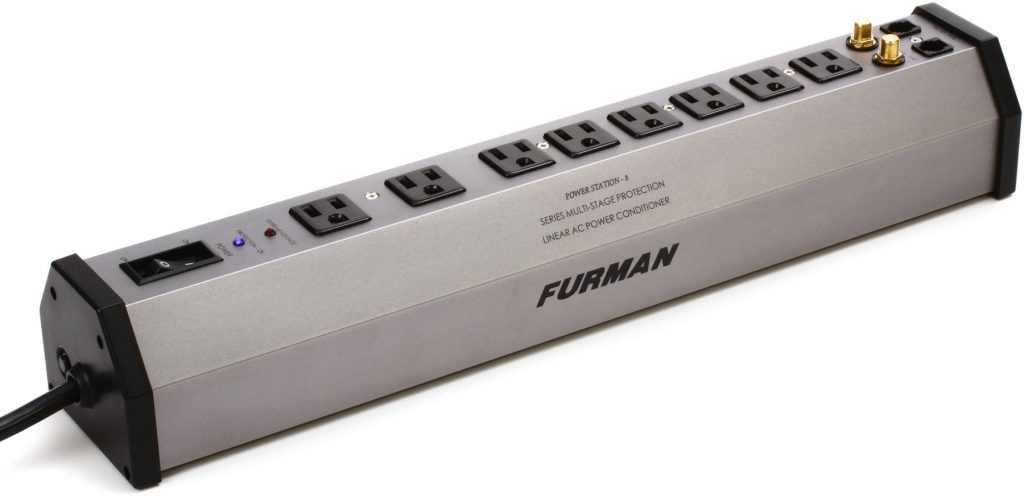O Electrical Power Extension Cord Having Continuous Electrical Current and Ground Monitor

In this guide, we will explain the differences between power strips, conditioners, and voltage regulators. You'll learn the applications for each and why some are better for particular situations than others. Follow each of the sections below to get started.
- What are current and voltage?
- What is a power strip?
- What is a power conditioner?
- What is a voltage regulator?
What are current and voltage?
Electricity is scientific and sometimes discussing the technicalities confusing. To best understand the differences between each type of power device, you need to know what current (amperage) and voltage (volts) are and how they relate to your power distribution.
Current is the rate of electrical flow, measured in amperage (A or mA). It's essentially how much power is provided in a certain amount of time. The amperage rating refers to how much current a circuit can provide or how much a connected electronic device requires and draws. For example, the Furman SS-6B power strip draws 15A. If you exceed that, the power strip will reset and your devices will lose power. Exceeding the current provided over a circuit will trip the associated breaker.
Voltage is the amplitude of power, or how strong it is. Measured in Volts (V), the voltage standard for devices is 110V in the United States and 220V in Europe. Some devices can be switched between the two, but you don't want to do that unless traveling or purchasing abroad. While that is the voltage standard, the voltage supplied by circuits in the United States will (or should) be about 120V @ 60Hz. Europe is a little different at 230V @ 50 Hz.
Power strips expand one outlet into several outlets and usually have a power/reset switch. Each power strip varies in how many outlets they have as well as their protective features. Typical power strips are usually an extension cord with additional outlets and a power switch but do little for improving the power quality or protecting connected devices. Professional power strips will usually have EMI/RFI shielding and surge protection.
Extension cords only extend the outlet of a circuit. Some have more than one outlet, which is convenient for connecting multiple devices, but are not designed with surge protection or interference reduction. Remember that each circuit has a set amperage amount, so connecting multiple power strips with high-amperage loads is not an ideal solution. Using a longer, higher gauge wire is always preferred.
Electronic Magnetic Interference (EMI) and Radio Frequency Interference (RFI) can be common when connecting to dirty power and will create more noise in your audio system. Many consumer power strips don't have the ability to filter this noise interference out, but some do.
While all power strips provide more outlets, many of them are not built with surge protection. When overloaded, the power strip will turn itself off to protect everything connected, but dramatic surges in power may damage the strip or cause it to overheat and ignite. To prevent that, use a heavy-duty power strip designed to withstand high voltage surges caused by thunderstorms or power outages. They may sacrifice themselves in extreme cases but will protect all the devices connected to it.

Power conditioners function similar to power strips but are designed to filter the interference and noise introduced to the circuit. There are a few different causes for extra noise in electrical circuits: household appliances, dimmable lights, and dirty or unbalanced power. When this happens at home or a gig, you'll need a power conditioner to clean the incoming power and remove the additional noise. Without a power conditioner, interference and noise can develop in your power, which will affect the performance/recording.

Where power strips lack, power conditioners are particularly good at removing ground loops. This is because an isolated transformer inside the unit can remove the noise with common-mode rejection. The Hum-X Ground Loop Hum Exterminator is another useful device for safely lifting ground loops.
Some power conditioners use additional digital filtering. This means additional internal components are used to treat the power, removing any noise, interference, or artifacts. This is useful for playing out or touring when you're not sure what quality power supply you'll be connecting to or if you have an extremely noisy circuit.
Many power conditioners are built with voltage meters but do not actually regulate voltage. This is useful for monitoring the voltage supply you're connecting to. The voltage may vary, but should typically read around 120V @ 60Hz (US) 220V @ 50 Hz (Europe).
A voltage regulator monitors and adjusts the incoming voltage level. This guarantees each device receives a consistent supply of voltage. Most voltage regulators also have surge protection and conditioning. If your location's AC power provides irregular or inconsistent voltage rating, a voltage regulator will keep at consistent so your devices operate with reliable power.

When you need help, Sweetwater has the answers!
Our knowledge base contains over 28,000 expertly written tech articles that will give you answers and help you get the most out of your gear. Our pro musicians and gear experts update content daily to keep you informed and on your way. Best of all, it's totally FREE, and it's just another reason that you get more at Sweetwater.com.
Source: https://www.sweetwater.com/sweetcare/articles/power-strips-power-conditioners-voltage-regulator-difference/

0 Response to "O Electrical Power Extension Cord Having Continuous Electrical Current and Ground Monitor"
Enregistrer un commentaire